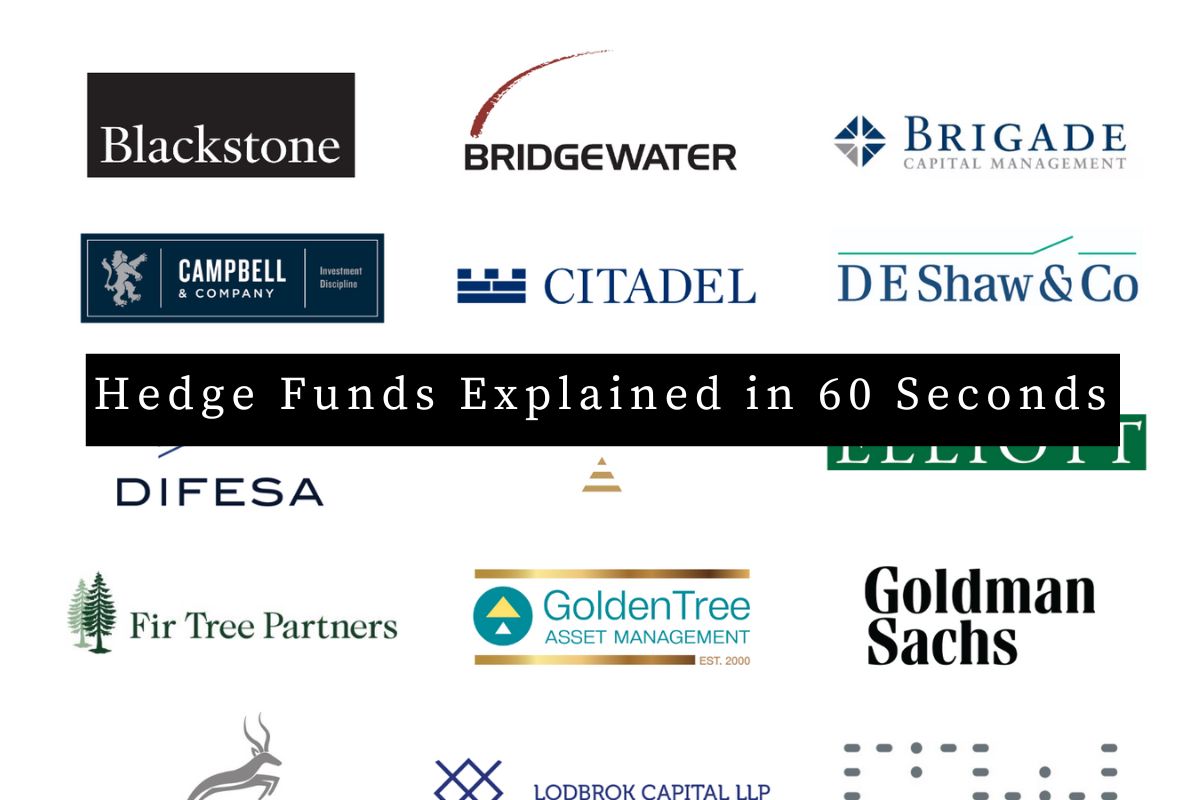Table of Contents
ToggleWhat are Hedge Funds?
Hedge funds are investment vehicles that are meant to protect money. They were created with the aim of providing protection to investors, but as time went on, hedge funds started to take more and more risks. They started betting on companies to fail, and this led to a lot of people losing money because they were taking outrageous risks. As a result, hedge funds started getting a bad reputation.
Hedge funds take money from clients, which could be wealthy individuals, companies, corporate pension funds, or anyone else. The money is then invested in the financial markets. However, it’s important to know that hedge funds take a high level of risk, which can result in big profits or huge losses. This is why only certified investment professionals are allowed to invest in hedge funds, as a certain level of understanding is required to know what one is getting into.
What is Leverage?
Another important aspect of hedge funds is that they use a lot of leverage. Leverage is the act of borrowing money to magnify or multiply the returns from a trade. For example, if a hedge fund takes 100 pounds from its clients, it can invest that money in the markets and make a profit of 1,000 pounds. However, with leverage, the hedge fund can borrow an additional 1,000 pounds, bringing the total amount of money available to invest to 1,100 pounds. This magnifies the potential returns to 5,000 pounds or 10,000 pounds, instead of 1,000 pounds. While this can result in huge profits, if the trades don’t go as planned, the hedge fund can suffer massive losses.
Hedge funds can invest in a variety of asset classes, such as fixed income markets, equity markets, or real estate. It’s important to know why you’re interested in a given hedge fund and which area you’re interested in, as each hedge fund takes a different level of risk.
Fee Structure
Hedge funds charge pretty high fees compared to the rest of the market. The typical fee structure for hedge funds is two and twenty, meaning that the hedge fund charges a 2% management fee for managing the money and a 20% fee for performance if a certain level of return is reached. This incentivizes hedge funds to take bigger risks in order to get a larger cut from the overall return.
Conclusion
In conclusion, hedge funds are investment vehicles that take a high level of risk and use leverage to magnify returns. They are meant to protect money, but as time went on, they started taking more and more risks and gained a bad reputation. However, hedge funds can result in big profits or huge losses, and only certified investment professionals are allowed to invest in them.
Additional Resources
To keep learning and advancing your career, we highly recommend these additional resources:
Top 19 Investment Bank Spring Insight Internship Programme (2023)
120+ Investment Banking & Finance Interview Questions!
List of Fortune 500 Companies in 2023












